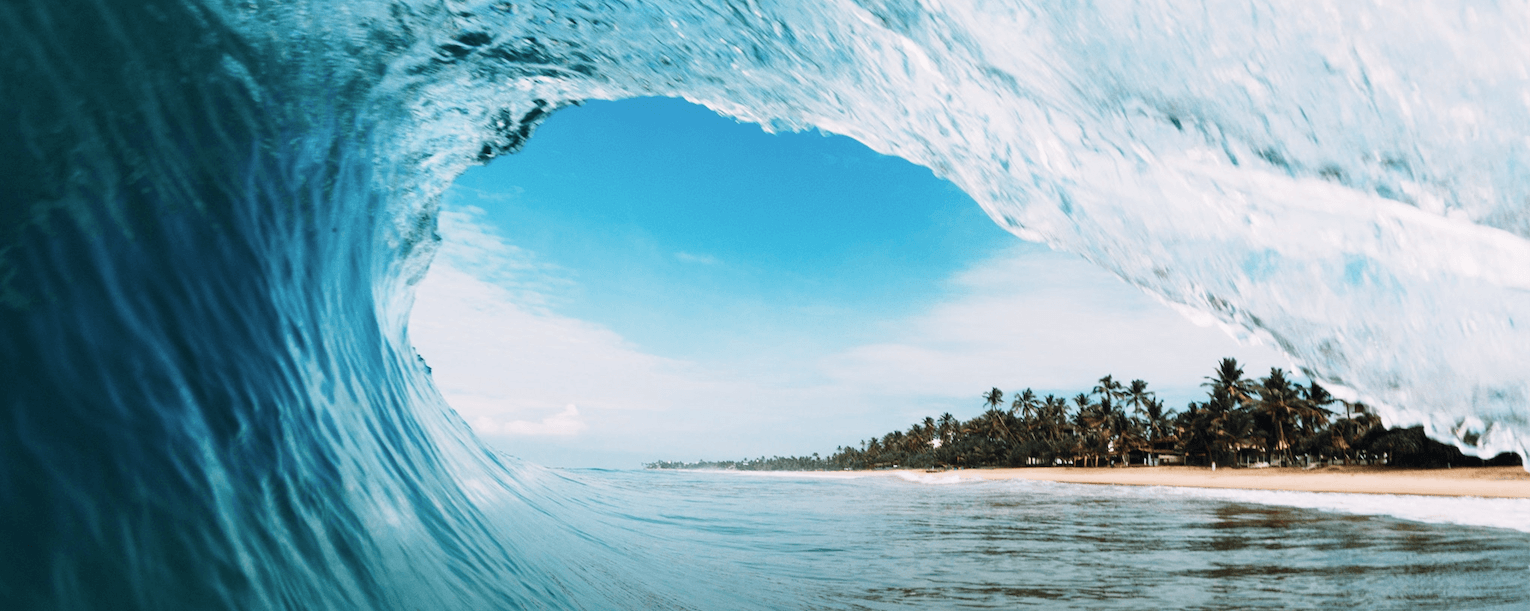Last week Enrique Collazo talked about practicing mindfulness with changes and transitions. In response to Enrique’s talk, Jennifer Ketler very aptly asked:
How can I be mindful of accepting, experiencing grief and loss, and be an agent for change? I am specifically thinking of changes in schools (we have furloughed several teachers this year, more changes to come, and fear around our contracts), political changes, and changes in relationships?
It can feel overwhelming to work on big, systemic issues like climate change, systemic oppression, education inequity, and more. Watch my talk about using Compassion and Mindfulness in Activism, or read the transcript below.
If you’re completely new to mindfulness, you might want to check out this Introduction to Mindfulness article first.
Setting an Intention This Week
This week, set an intention to notice the emotional feeling related to an issue that you care about.
Listen to this Guided Mindfulness Practice
Use this guided mindfulness practice a few times this week to start to experience the feelings in your body related to an issue you care deeply about.
Transcript of Jessica’s video talk:
Hi, I’m Jessica Morey and my nickname is J-Mo. We’re here at Inward Bound Mindfulness Education, iBme, at our international headquarters in Concord, Massachusetts. I am the Executive Director and lead teacher for Inward Bound mindfulness team retreats.
I went on my first retreat a quarter century ago when I was 14. I fell madly in love with meditation practice and mindfulness as a teenager after that first retreat. I went back every year and then went to Asia and practiced in a monastery for awhile and did a three month retreat when I was in college. Right alongside of that great love and passion was climate and clean energy work. My nickname when I was nine was “Save a Tree.” So it’s always been a big passion of mine to care about the Earth, and those two passions grew together. They’ve been mutually supportive for me throughout my life after I did my degree in engineering, environmental engineering, and worked in clean energy and climate policy.
I would say that my meditation practice has been a major resource for me in that work in the world, and I think it can be a resource for teachers both for their own work because anyone who’s a teacher these days is doing what I would consider basically social activist work, especially if you’re working in a low income community or a school that’s under-resourced, which is unfortunately most of our schools today. So how do we be social activists, and how does the practice support that?
I feel really committed that when we teach mindfulness practice to young people… it’s not just about them feeling calmer, behaving better, or getting better test scores. For me it’s really about young people discovering who they are, what they value, and what they want to do in the world. And already young people care about the planet. They care about what’s wrong with the planet. They see it. They haven’t numbed out yet. It’s just natural to me that we would talk about how these practices can support who and how they want to be in the world.
How did mindfulness practices support your work in climate justice?
Giving me the energy to keep going. Working in climate change, and I sort of still feel it now… it’s kind of depressing, especially when you think about how I got really involved in this 20 years ago. At that time it was like “this is a terrible crisis. We need to do something,” and here we are 20 years later, and we haven’t done very much. We can just see the results of our actions and the destruction of the planet more and more all the time. So how do you deal with the overwhelm and the pain… it’s in some ways a searing pain of these issues… without collapsing? The other piece of it is how do you fuel the work, not from anger, not from rage or hatred, so you don’t fall on either side of just shutting down and suppressing or acting out in rage and anger, creating an other and an enemy. Our practice can actually help us to figure out that line in the middle.
How can we use our practice to face social and environmental justice?
Using our practice to highlight first what’s okay and what’s working in our life. So what are the resources that we have? Where’s the beauty? Because there is beauty. Paying attention to what’s working, and that is sort of countercultural. When you think about the news, they don’t often highlight this, but where is the kindness? There are thousands, hundreds of thousands of people who care as much as I do, as much as we do. There are people doing stuff every day to try to improve the situation using their ingenuity. Use that to energize and ground ourselves, and then out of that place of energy and grounding that we know we can always come back to we can then start to begin to explore our own suffering, the pain that we actually feel related to the way things are.
Part of what we’re doing when we explore what we’re feeling is actually starting to untangle it. What’s in there? Is there a version in there of “I don’t want things to be the way they are”? Is there a hopelessness? And see if we can just get to the sadness and just hold the sadness. And maybe there’s also this wish of what we wish could be. You just hold that. The wanting, the wanting. If we can learn how to just hold our sadness and our wanting with a lot of tenderness, courage, and vulnerability… and then see what kind of wisdom and creativity arises out of that wanting and sadness. So it’s not a reactive shutting it down. In many ways the way that we act in the world, in many activists, is actually because we can’t stand feeling what we feel anymore, trying to press down, avoid, or not feel those feelings.
If we can actually just open up to it and learn how to be with that, which is exactly what our mindfulness and compassion practice helps us do, then we can see what arises. It starts with feeling it and being with it in ourselves. The more that I feel comfortable and have the capacity to hold my own suffering, the more I’m going to be able to be with you… and just face, hold, and be with whatever it is that you’re feeling and holding. For teachers who are working with kids today, we need that capacity. Teens and young people need us to be able to hold space for what they’re going through. If I can do that for myself, then I can create the space to be with you and your suffering.
Who is an inspiration to you?
Joanna Macy, who’s a meditation teacher as well. She’s a huge inspiration for me and talks a lot about how we work with the despair, basically, over a planet. I think this all time and people will say this – if you don’t experience some pain related to what’s happening, that seems like something’s wrong. Right? When people talk about young people being more anxious, more mental health issues, more depression, I’m like “no kidding, of course, how could you not be seeing what’s happening right now?” What it means to be human and connected as to feel pain. But then it’s about what we do with that. The purpose is then to get us to act in a way that will reduce the pain, not tell somebody to just numb it out, but actually try to figure out how to address it. There are so many activists talking about this now… about how do we imagine new futures? And that’s how we get there… We can have a lack of imagination, but this is where young people can show us. They still have an imagination. Many people have brilliant creative ideas on retreat or when you’re sitting alone, when we’ve kind of wiped away the repetitive, neurotic thinking. Often there’s a wellspring of creative possibility underneath that, that we can start to notice and pay attention to.
What is the difference between empathy and compassion?
One thing that I find really helpful to me is this distinction between empathy and compassion. The work of Tania Singer, who’s a scientist and researcher, has really distinguished this. Empathy is the direct, attuned, felt sense of feeling with another person, with the earth, with another being. Their suffering. It can be either suffering or their joy, empathetic joy. Compassion is feeling that and then the wish to help. The wish to alleviate the suffering. Tania Singer did a bunch of brain studies on people doing empathy and compassion meditation and saw that people doing empathy could burn out, as it can be quite painful. You get totally overwhelmed and burnt out. When they shifted to connecting with that wish to help, even not doing the helping or knowing exactly what to do, but the wish to help… that actually is energizing and can be a kind of positive felt experience. So being sure that we make that shift and then letting the creative action come out of that wish.
About Jessica
Jessica Morey, MA is the Executive Director of iBme. She began practicing meditation at age 14 on teen retreats offered by the Insight Meditation Society (IMS).
Before joining iBme, Jessica worked in clean energy and climate policy and finance. She holds a BA in Environmental Engineering from Dartmouth and Masters degrees in Sustainable Development and International Affairs. Her published works range from the chapter ‘Ordinary Awakening’ in Blue Jean Buddha to Conflict Resolution of the Boruca Hydro-Energy Project: Renewable Energy Production in Costa Rica. Her experience of bringing mindfulness into her work and life was described in a 2012 Shambala Sun article ‘Dharma 2.0.’ More recently she wrote an article in the February 2014 Mindful Magazine, ‘Finding My Way,’ about her experience learning and benefiting from mindfulness throughout her young adult years. She is an avid yoga practitioner and skier and loves dancing in any form.
Join Our Online LIVE Guided Practice on July 10th
We’re inviting our community to join Jessica and the Mindful Schools Team for an online guided practice on Tuesday, July 10 at 4pm PST / 7pm EST. If you’re unable to join us, we’ll post the recording of the guided practice here and also in the Mindful Summer community. RSVP here for more details. The recording from the practice is below:

